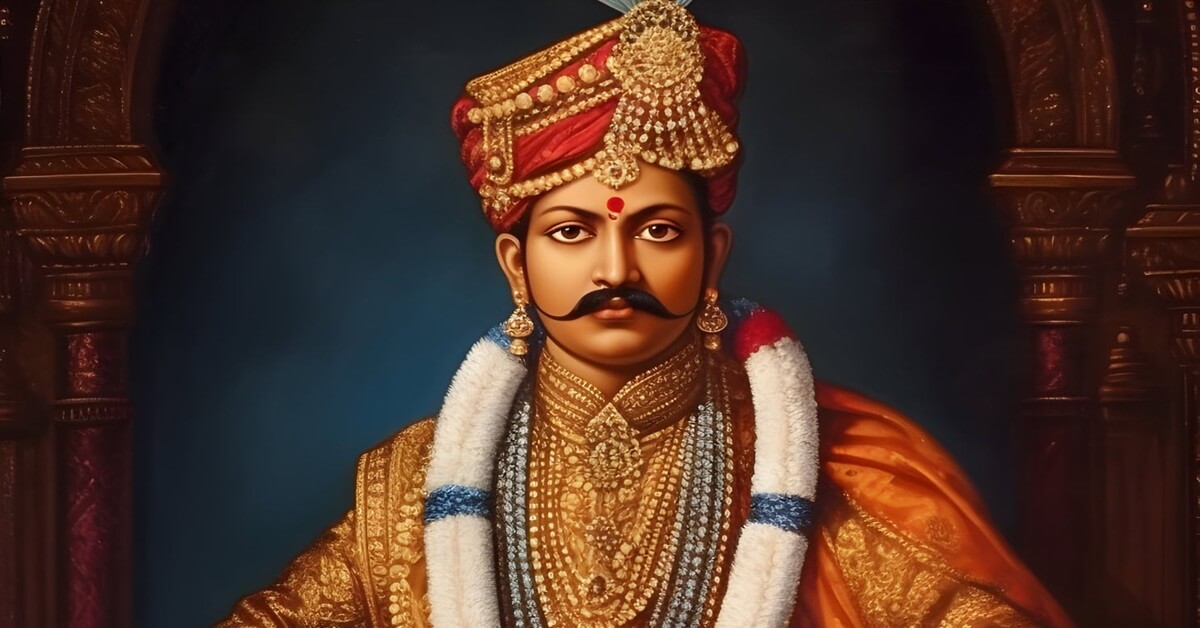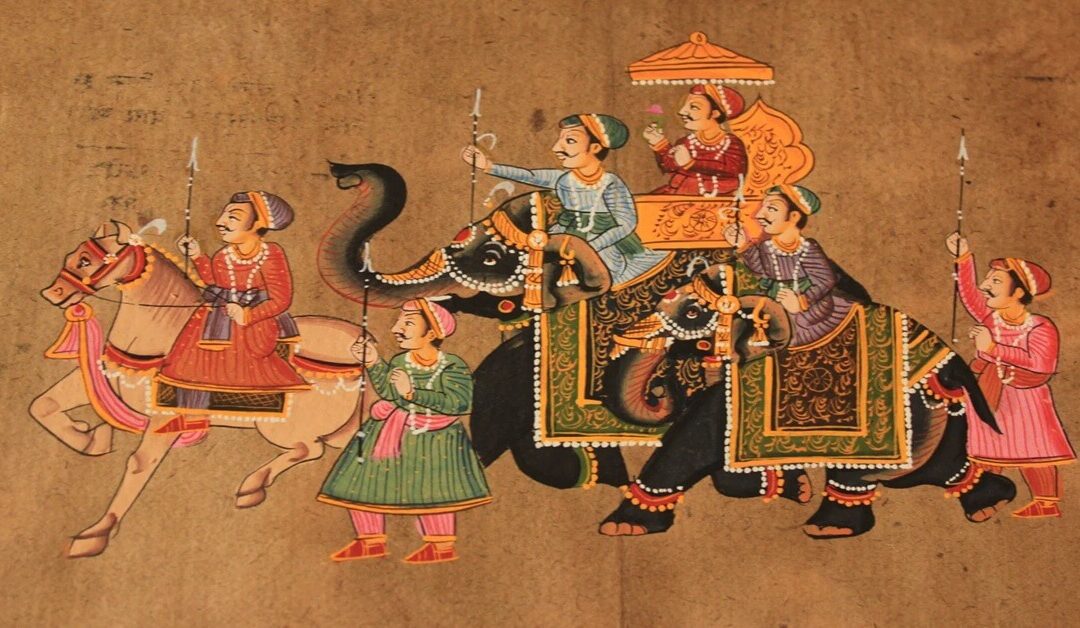
Cultural Contributions of Rajputs
The Rajputs were not just warriors and rulers; they were connoisseurs of art and architecture. Their contributions to India’s cultural heritage are remarkable, with their architecture reflecting a blend of indigenous traditions and external influences, primarily Mughal and Islamic styles. This synthesis resulted in a distinctive architectural style that remains unparalleled in its beauty and ingenuity.
Background of Rajput Architecture
* Rajput architecture is renowned for its forts, palaces, and temples, which are scattered across North and Central India. These structures are testimonies to the artistic vision and technical expertise of the Rajput rulers.
* Classification of Structures: Rajput architecture includes both secular(forts, palaces, stepwells, and gardens) and religious (temples and shrines) structures.
* Defensive Architecture: The forts were meticulously designed for defense, with high walls, ramparts, bastions, and strategically placed gates to repel invasions.
* Mughal Influence: Mughal art and architecture had a significant impact on Rajput structures, blending Islamic architectural elements such as domes, arches, and intricate ornamentation with local styles.
* City Planning: Several Rajput rulers also engaged in urban planning, with cities housed within fortified walls, featuring distinct functional zones and civic structures.
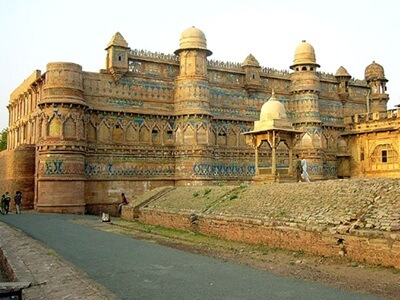
Forts and Palaces of the Rajputs
The forts and palaces built by the Rajputs symbolize their grandeur and dominance:
1. Chittorgarh Fort:
* Known as India’s largest fort, it covers an area of 700 acres.
* The fort includes seven gates, each with distinct names like Padan Pol and Ram Pol, and historical structures like the Vijay Stambh (Tower of Victory), Kirti Stambh, and Fateh Prakash Palace.
2. Vijay Stambh (Tower of Victory):
* Built by Maharana Kumbha in the 13th centuryto commemorate his victory over Mahmud Khilji of Malwa.
* The tower is 37 meters tall, with nine storeys, adorned with statues of Hindu deities and intricate carvings.
3. Jaisalmer Fort:
* Constructed in 1156 ADby Bhati Rajput ruler Rao Jaisal.
* Located on Trikuta Hillin the Thar Desert, the fort is made of yellow sandstone, giving it a golden hue.
4. Udaipur Palace:
* Built by Maharana Udai Singh on the shores of Lake Pichola.
* Known for its elaborate courtyards, terraces, and pavilions with decorative marble work.
5. Hawa Mahal (Jaipur):
* Constructed by Raja Jai Singh, this structure is a prime example of Rajput architecture adorned with 953 jharokhas (small windows)for ventilation and privacy.
6. Amber Fort:
* Situated near Jaipur, Amber Fort features red sandstone and marble construction with a blend of Mughal and Rajput styles.
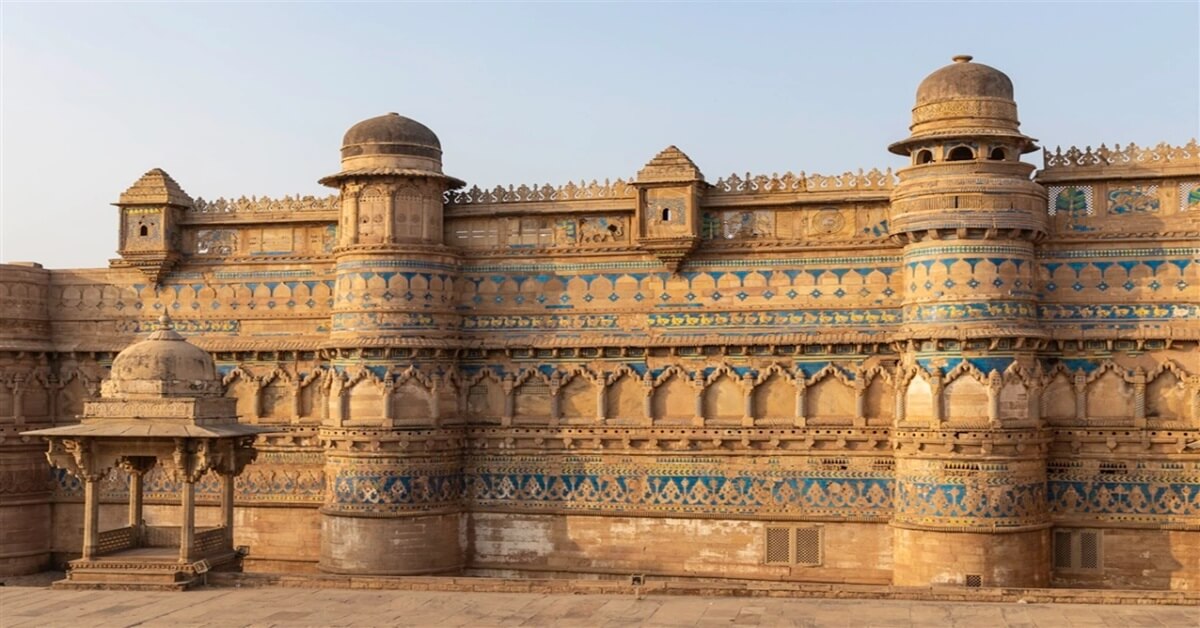
Rajput Temples: A Divine Masterpiece
The Rajputs built numerous temples across North and South India, showcasing their devotion and architectural excellence.
1. Key Features of Rajput Temples:
* Garbhagriha(sanctum sanctorum), vimana (tower), shikhara (spire), and amalaka (stone disc on top of the shikhara).
* Sabha Mandap: An assembly hall was a mandatory feature in these temples.
* The exteriors often featured intricate carvings, depicting scenes from mythology, daily life, and nature.
2. Famous Rajput Temples:
1. Khajuraho Temples:
* Built during the Chandela dynasty, these temples are known for their exquisite carvings and erotic sculptures.
* Kandariya Mahadeva Temple(dedicated to Lord Shiva) is a masterpiece with 84 shikharas, representing Mount Kailash.
2. Dilwara Jain Temples(Mount Abu):
Constructed in white marble, these temples are renowned for their intricate ceilings and finely carved pillars.
3. Jagannath Temple(Puri):
An iconic temple of the Vaishnava tradition.
4. Vishwanath Temple(Khajuraho):
Dedicated to Lord Shiva, it exemplifies the finest Rajput craftsmanship.
Distinctive Features of Rajput Sculpture
1. Aesthetic Elements:
* Unlike Mughal art, Rajput sculptures emphasize romanticismover eroticism.
* Common themes include deities like Radha-Krishna, Ram-Sita, and scenes from Hindu epics.
2. Architectural Elements:
* Chhatris: Dome-shaped pavilions, often serving as memorials.
* Jharokhas: Overhanging balconies used for ventilation and observing proceedings without compromising privacy.
* Stepwells: Ingeniously designed water reservoirs with intricate geometric patterns.
3. Memorial Stones and Cenotaphs:
* Structures like the Ahar Cenotaphsin Udaipur and Jaswant Thada in Jodhpur honor the memory of departed royals.
City Planning in Rajput Architecture
* Rajput rulers demonstrated exceptional skill in city planning. Their cities were often housed within fortified walls and meticulously designed to serve both defensiveand administrative purposes.
* Examples: Jaipur (planned by Raja Jai Singh) and Jaisalmer (strategically located in the desert).
Cultural Contributions of King Bhoja
1. Founder of Bhojapur:
* Established the city and constructed the Bhojeshwar Temple.
2. Scholarship:
* Authored works on philosophy, yoga, and poetics.
* Supported literary figures like Dasabala, who authored Chintamani-Sarnika.
Legacy of Rajput Architecture
The architectural grandeur of the Rajputs is preserved in UNESCO World Heritage Sites like:
* Hill Forts of Rajasthan:
A collection of six forts, including Chittorgarh, Kumbhalgarh, and Ranthambore.
* Palaces:
Structures like Umaid Bhawan Palaceand Albert Hall Museum, which incorporate Indo-Saracenic styles.
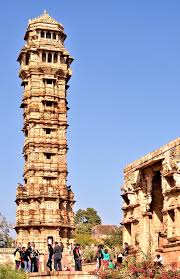
Conclusion
The Rajputs have left an indelible mark on India’s historical and cultural landscape through their architectural marvels. Their forts, palaces, and temples are not just monuments but stories carved in stone, reflecting the grandeur of their era. The Rajput synthesis of Islamic, Hindu, and local traditions resulted in a unique architectural style, immortalizing their legacy in the annals of history.


